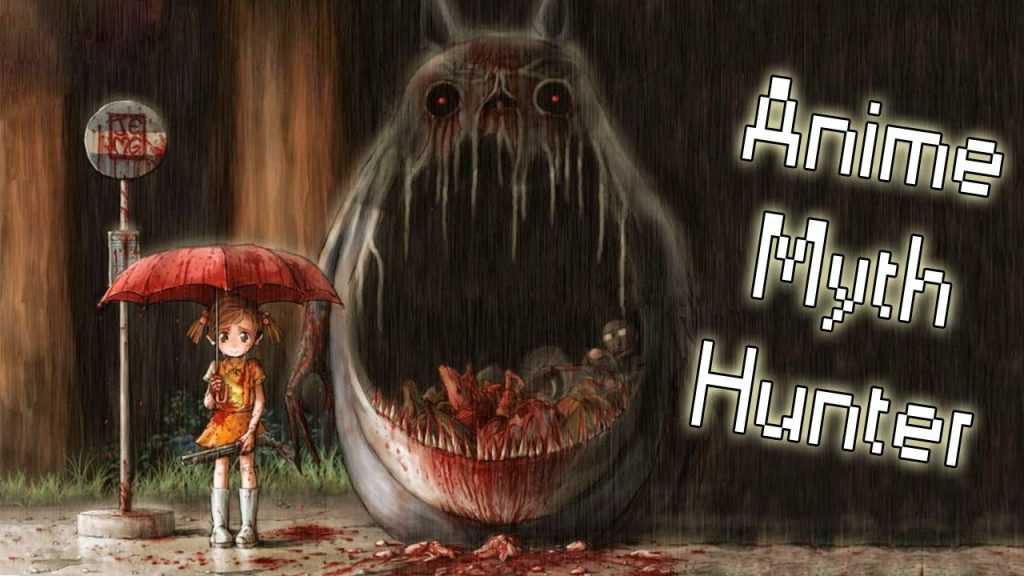Uncategorized
The Scary Story Behind “My Neighbour Totoro”
I bet My Neighbor Totoro is everyone’s favorite anime movie. The story of two sisters in the peaceful Japanese countryside with mythical creatures is adored by both children and adults. However, for some viewers, there is a darkness lurking underneath the surface. Totoro isn’t exactly a cuddly creature. He’s a serial murderer.
The interpretation of Totoro as the God of Death elaborates on the film’s finale, which has always struck me as strange for a variety of reasons.
According to legend, Totoro is the God of Death, which means that everyone who sees Totoro is either dying or already dead. That means that when Mei goes missing and a sandal is discovered in the pond, Mei truly drowned. When Satsuki is confronted with the truth about the sandal, she lies about it not being Mei’s. As a result, Satsuki embarks on a desperate hunt for Totoro, shouting his name and even opening the portal to the world of the dead herself. She discovers her dead sister with Totoro’s aid, and the two of them head to their mother’s hospital together. The only one who genuinely noticed the sisters was the mother, who is also about to die.
And in the ending scene, Satsuki and Mei don’t have any shadows some days.
This hypothesis doesn’t end there. The Sayama Incident (My Neighbor Totoro takes place in Sayama Hills) is a well-known murder case in which two sisters were found dead. One of the girls claimed to have seen a cat ghost before committing herself, according to the tale. This, however, was an urban legend, according to the Japanese website Flow Management. It was most likely connected to the Totoro is a God of Death myth to make it sound more credible.
While that isn’t entirely accurate, the Sayama Incident occurred in May, and both of Totoro’s sisters are called “May”: “Satsuki” means “May” in Japanese, while “Mei” is the Japanese pronunciation of “May.”
The “May blues” (or gogatsubyou) are a common ailment among new students and employees in Japan, as both the school year and the work year begin in April. This type of sadness is common among persons who are having difficulty adjusting to new environments. The family in My Neighbor Totoro has relocated to a new neighborhood. This might be interpreted in a broader sense as a reference to depression.
The Totoro as God of Death notion isn’t new, but it’s one that’s here to stay. Because it continues to elicit interest and debate on the internet, the Japanese website Byoukan Sunday pointed out that Studio Ghibli, the studio behind Totoro, has already debunked these notions a few years ago.
“Do not be concerned,” said a statement from Studio Ghibli. “There is no reality or configuration in My Neighbor Totoro that Totoro is the God of Death or that Mei is dead.”
In addition, Studio Ghibli rectified the absence of darkness encircling both Satsuki and Mei in the film’s conclusion. This was because the film’s animators believed that shadows were unnecessary in this scene, according to Studio Ghibli. The studio went on to say, “We really don’t want anyone to accept this notion.”
When the artist claims it’s completed, it’s not. An audience is required to watch and understand art. It is up to the audience to determine whether it is accurately interpreted or not.
This tale, whether true or false, adds a fascinating layer to My Neighbor Totoro. It adds another layer of interpretation for the viewers. While some of the facts may be incorrect (particularly in regards to The Sayama Incident), the Totoro as God of Death subtext does open the film up to additional discussion—a discussion that Studio Ghibli does not want and has attempted to suppress. Despite this, the idea persists.


